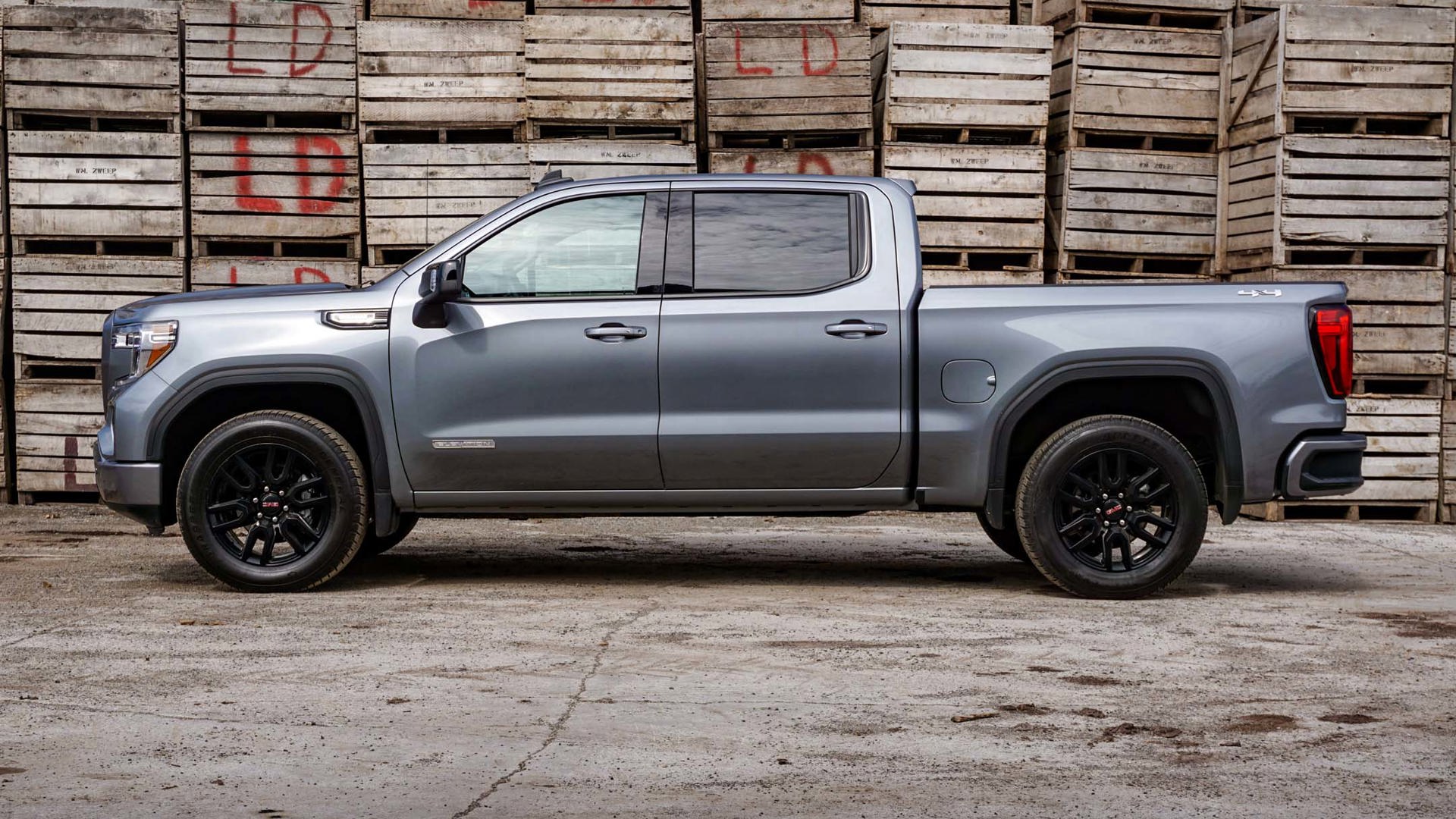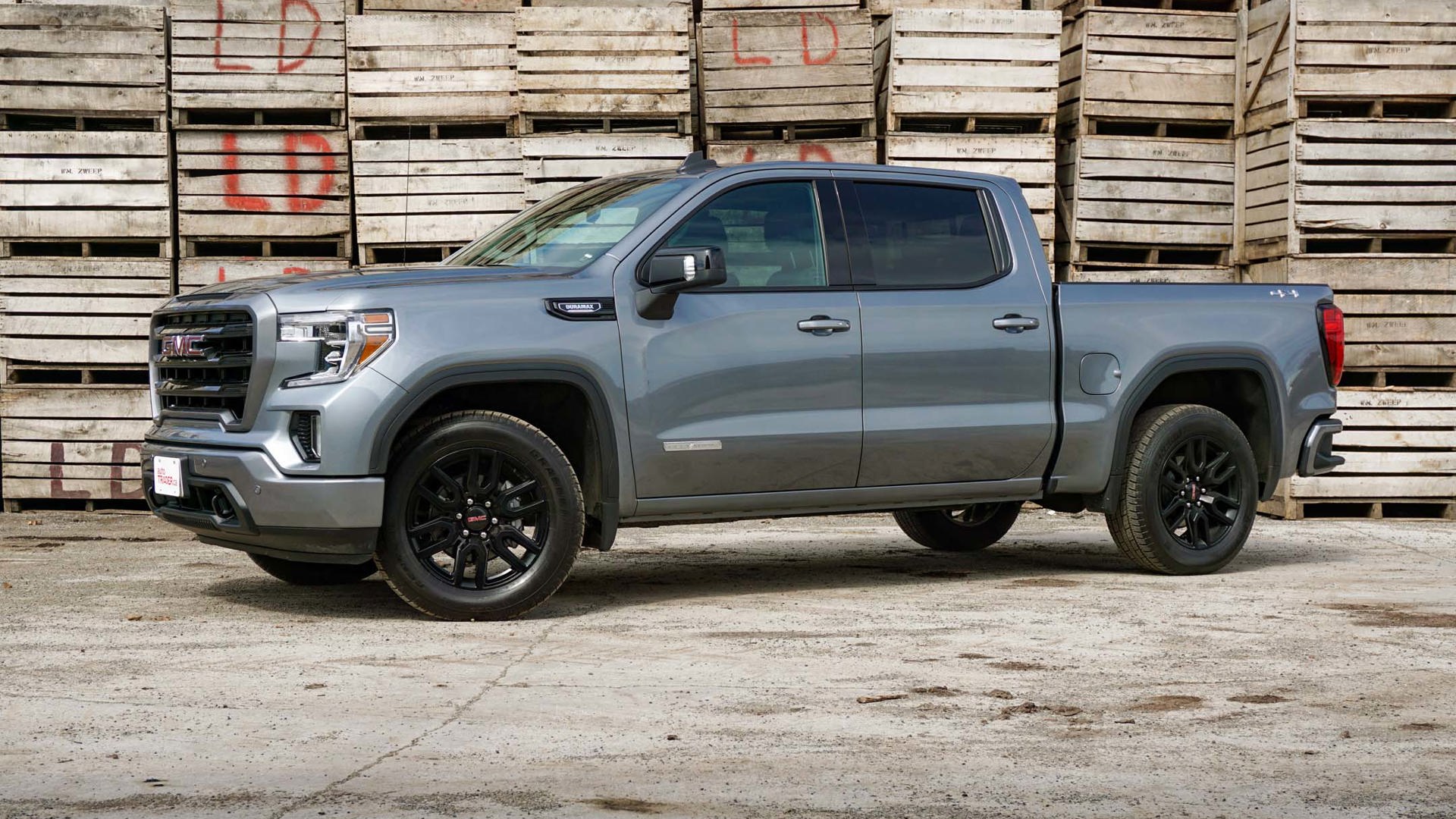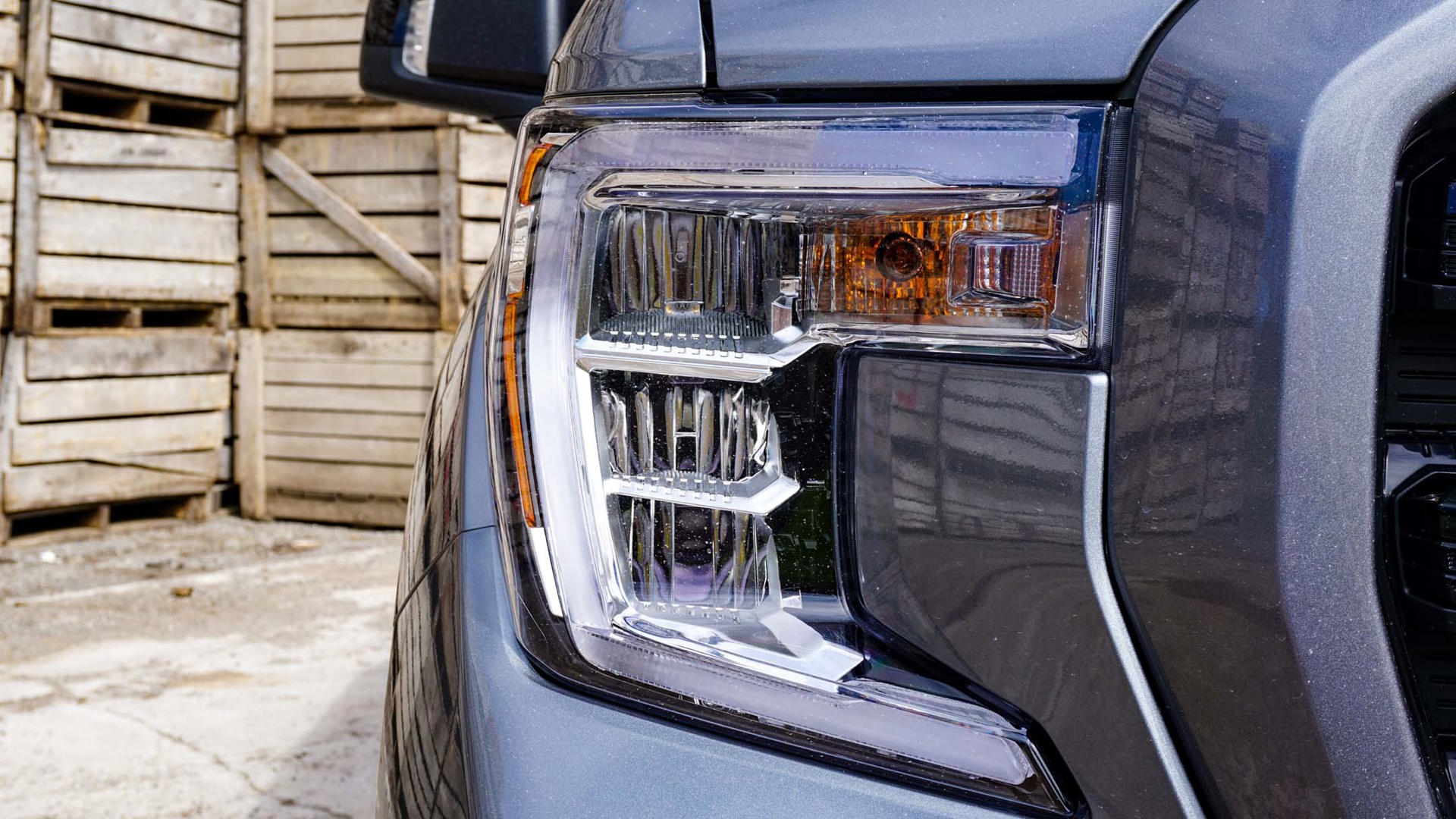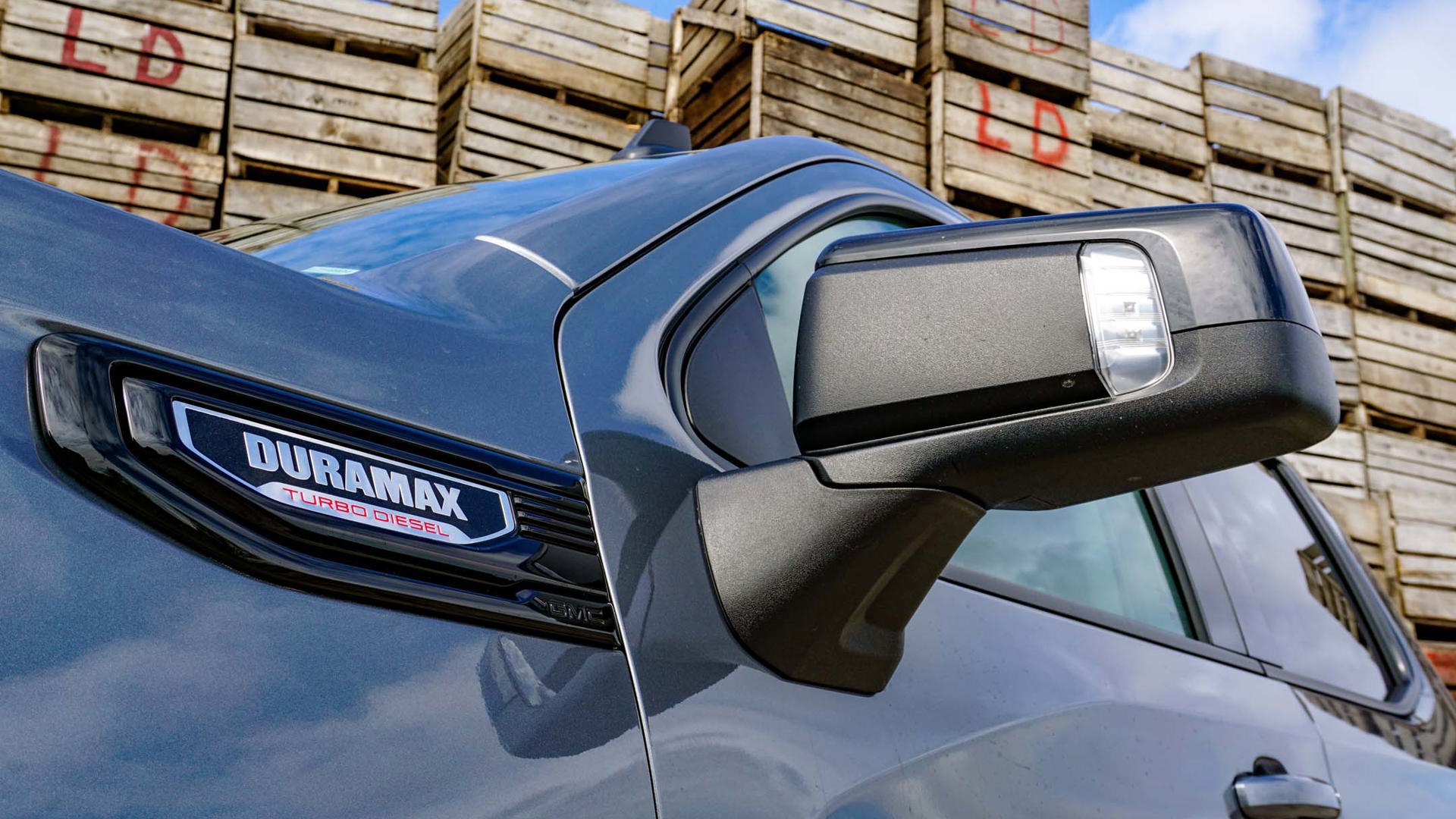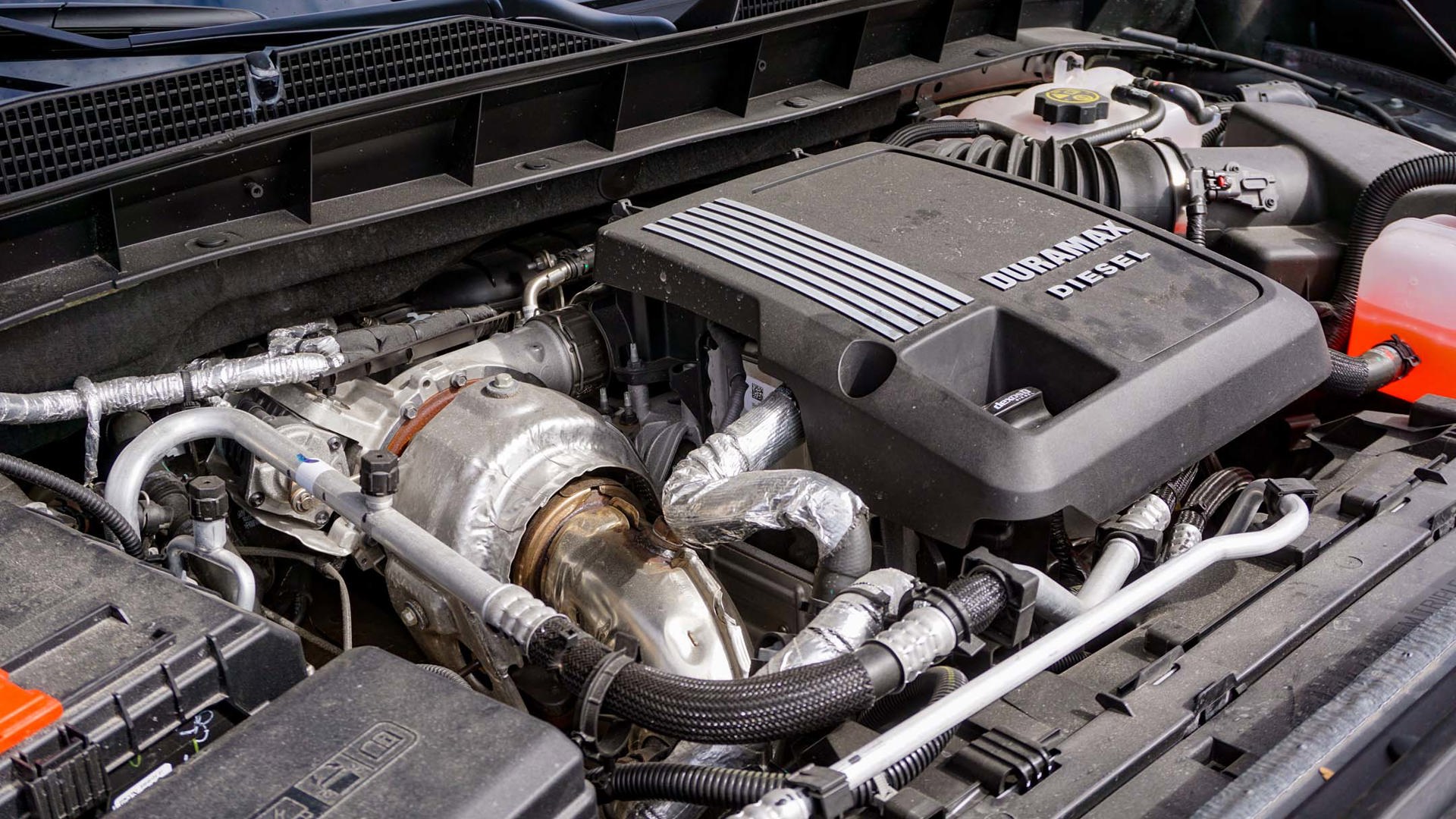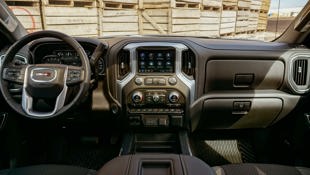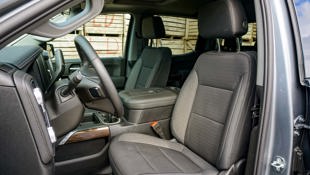 AutoTrader SCORE
AutoTrader SCORE
-
STYLING8/10
-
Safety6/10
-
PRACTICALITY9/10
-
USER-FRIENDLINESS9/10
-
FEATURES6/10
-
POWER10/10
-
COMFORT8/10
-
DRIVING FEEL9/10
-
FUEL ECONOMY10/10
-
VALUE6/10
Sadly, it looks like the diesel revolution that never was is also one that never will be.
The Dieselgate scandal certainly didn’t help, though it’s hardly to blame for the failure of compression-ignition engines to catch on in this part of the world. The stigma of spewing soot long preceded the Volkswagen Group’s missteps, rendering diesels something of a niche in North America. Except they still have a place in pickups, and half-ton trucks like the 2020 GMC Sierra are something of a new frontier.
Power: 10/10
General Motors (GM) was the last of the Detroit Three to drop a diesel into its half-ton trucks, and it was worth the wait. Unlike rivals from Ram and Ford, the diesel offered in the GMC Sierra – alongside its Chevrolet Silverado sibling – is a sultry straight-six-cylinder. While the diesel-powered Ford F-150 and Ram 1500 that came before it both get more conventionally configured V6 engines, the Sierra uses a longitudinally mounted six-cylinder to get the job done, and it’s better for it.
With outstanding balance and direct power delivery, straight-sixes are a rare breed of satisfying smoothness. That the 3.0L under the Sierra’s hood happens to be a diesel means it also serves up loads of low-end torque. Officially rated at 277 hp and a whopping 460 lb-ft of torque, there’s plenty of output to work. That all the engine’s torque kicks in at just 1,500 rpm means it doles out powerful forward momentum after only a brief pause while the turbo bolted to its side spools up.
Mated to a 10-speed automatic, the straight-six might very well be the perfect engine for a half-ton truck, not to mention one of the best engines on the market today. Shifts are mostly smooth as the transmission tames all that torque and makes it usable no matter the situation. When it’s time to pass, the 10-speed quickly kicks down a gear or two, never leaving the truck flat-footed at inopportune moments. The exhaust brake, meanwhile, does the same in order to moderate speed on downhill stretches, sparing the conventional brakes in the process – a handy trick when towing.
While there’s some of the audible clatter common to diesel engines, it’s mostly contained to initial throttle tip-in, and is otherwise quiet under most conditions. Steadily roll onto the accelerator, however, and the serenity is broken by a roar that’s reminiscent of a gas-powered V8. It may not come across quite as satisfying as the Sierra’s optional 6.2L, but it’s something of a surprising soundtrack for a diesel-powered truck. For those after a soundscape that’s further removed from the diesel spectrum, there’s a cat-back sport exhaust on the options list, too.
Fuel Economy: 10/10
Beyond even-keeled performance, the Sierra’s diesel engine delivers fantastic fuel consumption. Its Natural Resources Canada (NRCan) ratings are substantially better than equivalent gas-powered versions, making it one of GMC’s most efficient models. The four-wheel-drive version tested here is good for 10.5 L/100 km in the city, 9.1 on the highway, and 9.9 combined, according to the government agency. That compares to 15.7 L/100 km around town, 12.0 on the highway, and 14.1 combined for the same truck powered by the 4.3L V6. Ratings for V8 models, meanwhile, fluctuate wildly depending on the transmission they’re mated to, though none of them comes close to the diesel’s miserly operation.
A week-long test covering 820 km resulted in combined consumption of 9.7 L/100 km – fantastic for a full-size truck. That roughly 35–40 per cent of those kilometres were racked up in the city makes it all the more impressive. Even a morning spent negotiating a moderately challenging trail did little to diminish the diesel-powered Sierra’s miserly ways, with average consumption never exceeding 10.1 L/100 km.
Of course, there are other considerations to make before buying a diesel truck. For starters, diesel fuel is generally pricier at the pumps than regular-grade gasoline. Routine maintenance like oil and filter changes also tend to be a bit more expensive for diesels. Then there’s the additional cost – and hassle – of filling it with the requisite diesel exhaust fluid (DEF) that helps reduce nitrogen oxide emissions. However, a 10 L jug of the urea/deionized water solution that costs about $20 should last quite a few thousand kilometres.
Value: 6/10
More than the marginal cost increases associated with diesel ownership, the upfront price of picking the 3.0L is significant. Opting for the compression ignition engine is a $4,830 upgrade, depending on trim – no small sum in an already expensive truck. (Ford, for the record, charges even more for the F-150’s diesel, which can cost as much as $7,500. Diesel power in a Ram 1500, meanwhile, is a $3,900 upgrade no matter the model.)
Before diving into pricing, there are a couple of important points to cover. First, pickup trucks are often incentivized, with selling prices vastly undercutting what they’re listed for in the first place. However, these offers vary wildly, making them all but impossible to write about in a review. Then there’s the simple fact that pickups are expensive, with their popularity largely responsible for pushing the average selling price of a new vehicle in Canada ever higher (the average transaction price eclipsed the $40,000-mark last year, according to data compiled by DesRosiers Automotive Consultants).
Now for this Sierra. While there are cheaper diesel-powered versions, the tester shown – a crew cab, short bed with four-wheel drive, and topped in Elevation trim – starts at $56,828 before freight and fees. What’s included for the money is a decent array of comfort and convenience features, though they stop short of expectations in such an expensive vehicle. The seats are covered in cloth upholstery, and there are none of the latest advanced safety features offered in more expensive models. Heck, the seats aren’t even heated – a feature that’s expected in even the most affordable new cars on the market these days.
To add the kind of stuff that makes it more suitable for everyday life takes an awful lot of upgrades. All told, this tester was decked out with $9,330 in optional equipment excluding the engine, bringing the grand total to $67,658 before tax. Even if it qualified for $10,000 in discounts, there’s no way to sugar-coat just how expensive this Sierra is.
Features: 6/10
Sure, the Sierra Elevation looks cool; the black and body-colour exterior accents give it a slick and stylish presence. There’s also an eight-inch touchscreen inside with Apple CarPlay and Android Auto, as well as a built-in Wi-Fi hotspot. But it’s not especially well equipped for daily-driver duty. It might be excusable to skip stuff like heated seats and automatic climate control in the base version, but a truck like this warrants more for the money.
With the exception of the infotainment system, most of the good stuff is saved for pricey upgrade packages. Looking for automatic climate control, heated seats, and a heated steering wheel? They can only be added through packages that add thousands to the price tag. Even then, the seats aren’t especially comfortable, with impossibly thin padding that’s quick to cause fatigue.
Even basic truck stuff is just that – basic. There’s a tow/haul mode that adjusts the transmission mapping for improved performance when moving heavy loads, an exhaust brake, and a dozen cargo tie-downs in the bed. Transmission and engine oil coolers, a trailer brake controller, and even a hitch with the requisite connectors are all offered, though they aren’t cheap.
Safety: 6/10
Advanced safety features aren’t especially abundant either. The tester shown featured blind-spot monitoring, rear cross-traffic alert, and front and rear parking sensors – as well as the government-mandated rear-view camera – but that’s the extent of the options available; anything more than that, like lane-keep assist, adaptive cruise control, or automatic emergency braking, is offered only on significantly more expensive models.
Unlike the Ram 1500, which earned a Top Safety Pick+ award, the Sierra goes without a designation from the Insurance Institute for Highway Safety (IIHS). In its assessment, the organization noted poor structural results in its passenger-side small overlap crash test, as well as poor headlight performance.
User Friendliness: 9/10
In spite of its lack of inclusion, the equipment added to the tester seen here makes it almost an ideal dual-purpose pickup. While leather upholstery – not to mention more comfortable seats – would be a welcome addition, the cabin isn’t decked out to the point of its opulence outweighing ruggedness. In short, it’s just as well suited to a jobsite as it is a weekend trip to the cottage.
Climb behind the wheel and you’re presented with a commanding view of the world outside, the massive windows that come with the crew cab configuration providing outstanding outward visibility. Those solid sightlines make it easy to keep an eye on all the sheet metal, too; at 5,886 mm from tip to tail, it’s a lot of truck to take care of. It is, however, more than manageable, with a fantastic steering setup that tailors resistance to the task at hand. It’s light at low speeds, making aligning with a trailer a breeze, yet there’s barely a sniff of play on centre at anything above parking-lot speeds.
Interacting with most controls is a cinch, though it’s a sliding scale. Take the centre console; that’s where you’ll find infotainment and HVAC controls, as well as a row of toggle-type switches that manage everything from traction control and auxiliary power to parking sensors and the engine’s idle stop-start system. It’s all clearly labelled and approachable, as is the eight-inch infotainment system that sits above it. Then there’s the switchgear for the lighting and four-wheel-drive system. Located to the left of the steering wheel, the buttons are tiny and tough to identify at a glance.
Practicality: 9/10
Most prominent among those controls is the rotary knob for tow/haul mode (there’s also a sport mode that adjusts transmission mapping and steering feel). The diesel-powered Sierra half-ton can move a lot of mass, though like any truck, capacities vary depending on configuration and content. The model shown is good to haul about 900 kg (2,000 lb) and tow 4,082 kg (9,000 lb) – the latter of which would be enough to challenge your humble author’s comfort level with a half-ton truck.
The standard 3.23-ratio rear axle also skews toward efficiency over capability, so choosing something beefier is recommended for those with plans to tow with any frequency (a 3.42-ratio axle is included in the max tow package). There’s also a handy hitch guidance camera view that makes lining up a trailer easier than ever, and there's a built-in trailer brake controller and upgraded engine and transmission cooling offered.
The short bed offers plenty of width between the wheel tubs (1,286 mm) to fit a sheet of plywood, while the 1,781 L of overall volume makes it roomy enough to haul everything from firewood to fertilizer. Of course, adding a spray-in bedliner is all but necessary – something that’s offered as a standalone option or part of a package.
There weren’t any bedside storage boxes or a fancy folding tailgate added to my tester, but it did feature corner steps in the bumper, as well as a 120-volt outlet and LED lights built into the bed. It all helped it feel familiar and functional – like a truck that’s ready to work.
That functional theme continues inside, though once again, it doesn’t come free. This tester’s massive centre console, for example, isn’t standard fare; instead, it’s available to those who choose bucket seats up front – but only if they add a costly options package first. Likewise, the rear seatback storage bins are included in a separate upgrade package.
With or without the upgraded interior storage, the Sierra crew cab is incredibly roomy inside. While the front seats benefit from the ability to recline, the second half of the cabin offers lots of legroom to go along with a couple of USB charging ports (there are two more in the front, along with another optional 120-volt outlet). It all makes for an excellent SUV alternative for trips to the cottage, with plenty of space for people and stuff inside and out.
Comfort: 8.5/10
Should that cottage be more than a couple hours from home, be prepared for a break or two along the way to shake out the soreness caused by the cardboard-thin seat cushions front and back. It didn’t take long for fatigue to set in during testing, with upper leg pain setting in after just a few hundred kilometres of driving. Cabin comfort proved reasonable otherwise, with good heated seat coverage – the heat can be isolated to just the seatbacks if you so choose – and a powerful automatic climate control system that blows steady streams of air out of the various vents inside.
With rivals like the Ram 1500 boasting ride comfort that’s incredibly car-like, the Sierra still rides like a truck – a refreshing quality these days. It’s far from uncomfortable, but the way broken asphalt reverberates through the frame and steering rack reminds you that you are, indeed, driving a pickup.
Driving Feel: 9/10
Despite its traditional truck demeanour, there’s a balance and refinement to the Sierra. Neither too rugged nor too mild mannered, it feels deliberate and purposeful from behind the wheel, the way a pickup should. The steering is superb, feeling a little more like an old school hydraulic system than an electrically assisted one, while suspension damping is polished and on point despite some shuddering and seesawing on uneven surfaces.
Cruising on the highway is where the diesel-powered Sierra is happiest, with engine speeds eclipsing 1,500 rpm only when passing or merging. Yet it’s always ready and able to provide a turbocharged kick in the pants when required, serving all 460 lb-ft of torque the moment the tachometer needle sweeps into that sweet spot.
Around town, the Sierra is surprisingly nimble for the full-size truck – though it’s still exactly that. While it’s light on its toes thanks to the excellent steering setup, the half-ton is quick to fill the majority of the lane on a city street, making for some nerve-racking moments as you negotiate street-parked cars and narrow laneways.
Such is the case when traversing trails, too, with the Sierra’s dimensions packing plenty of anxiety. In spite of that uneasiness, the 205 mm of ground clearance and selectable four-wheel drive make it capable of crawling through most moderate obstacle courses (or launching a boat on a soft and sandy ramp). While the transfer case is managed electronically through buttons on the dash, engaging four-wheel drive is still accompanied by a satisfying clunk as power is connected to the front wheels.
Styling: 8/10
The trend toward trucks with gargantuan grilles can be found here, too, but the Elevation’s blackout treatment helps make the Sierra look a bit more understated than some of its competitors. Ditching brightwork in favour of black and body-colour components gives it a definite presence, but it remains relatively demure. The cabin is equally civilized, mainly made up of black and silver plastic panels, with a bit of fake wood mixed in for good measure.
The Verdict
The diesel engine offered in the GMC Sierra is powerful, smooth, and efficient. In short, it renders V8 versions obsolete. Ultimately, deciding whether the compression-ignition engine is right for you should come down to what you plan to do with your pickup – and how long you plan to keep it. It’s not an inexpensive upgrade, so those turning their trucks over after only a couple years aren’t likely to get their money’s worth. But those considering shelling out any extra dough for a gas-fired V8 would be wise to consider all this silky straight-six brings to the table.
| Engine Displacement | 3.0L |
|---|---|
| Engine Cylinders | Turbo Diesel I6 |
| Peak Horsepower | 277 hp @ 3,750 rpm |
| Peak Torque | 460 lb-ft @ 1,500 rpm |
| Fuel Economy | 10.5/9.1/9.9 L/100 km cty/hwy/cmb |
| Cargo Space | 1,781 L |
| Model Tested | 2020 GMC Sierra 1500 Elevation Crew Cab 4WD |
| Base Price | $51,998 |
| A/C Tax | $100 |
| Destination Fee | $1,900 |
| Price as Tested | $67,658 |
|
Optional Equipment
$13,660 – Duramax Diesel Engine, $4,830; Elevation Value Package, $3,370; Preferred Package, $1,895; Power Sunroof, $1,325; Driver Alert Package, $1,295; Spray-on Bedliner, $600; Satin Steel Metallic Paint, $495; Integrated Trailer Brake Controller, $350; Package Discount, -$500
|
|


